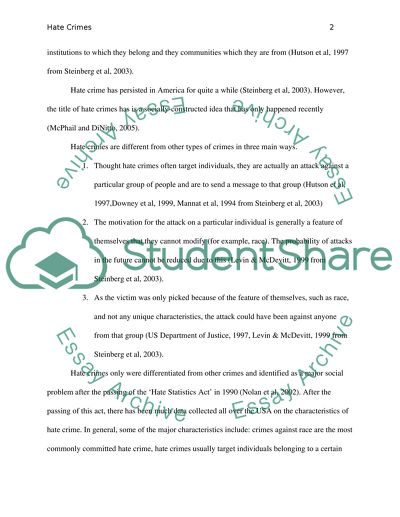Cite this document
(The Birth and Maturation of Hate Crime Policy in the United States Term Paper, n.d.)
The Birth and Maturation of Hate Crime Policy in the United States Term Paper. Retrieved from https://studentshare.org/law/1573861-persuasive-research-paper-on-hate-crimes
The Birth and Maturation of Hate Crime Policy in the United States Term Paper. Retrieved from https://studentshare.org/law/1573861-persuasive-research-paper-on-hate-crimes
(The Birth and Maturation of Hate Crime Policy in the United States Term Paper)
The Birth and Maturation of Hate Crime Policy in the United States Term Paper. https://studentshare.org/law/1573861-persuasive-research-paper-on-hate-crimes.
The Birth and Maturation of Hate Crime Policy in the United States Term Paper. https://studentshare.org/law/1573861-persuasive-research-paper-on-hate-crimes.
“The Birth and Maturation of Hate Crime Policy in the United States Term Paper”, n.d. https://studentshare.org/law/1573861-persuasive-research-paper-on-hate-crimes.


